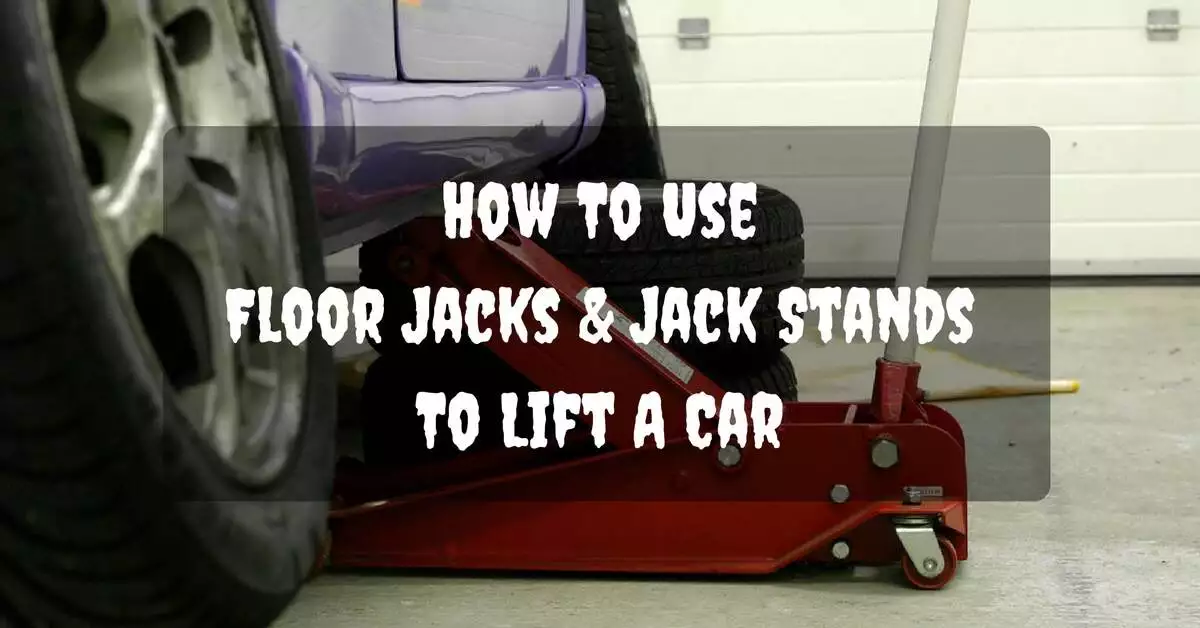A lot of you know that I love cars. But what many people don’t know is that I spent 5 years working in my Uncle’s garage. I’m not a professional or certified mechanic by all means, but working on various old and new cars, trucks, and SUV’s for a good part of my youth made me a walking encyclopedia when it comes to car maintenance.
What really surprises me is the lack of knowledge on the proper way to jack up a car. I wrote a helpful guide on that topic. If you haven’t read it, I highly suggest you check it out.
Anyway, I was perplexed to find out that some of my friends (who happen to be HUGE car nuts) don’t even know how to use a floor jack. Some don’t even know how to use jack stands.
In order to shed light on this matter, I created a new guide that will help you gain the necessary knowledge on how to use a floor jack and how to use jack stands.
It’s really not that hard. If you haven’t tried jacking up your car, then I highly suggest that you learn the old school way, which means you should go out into your garage and try it for yourself.
But first, here are a few basic things that you need to know about car jacks and jack stands.
Contents
The Many Types Of Car Jacks
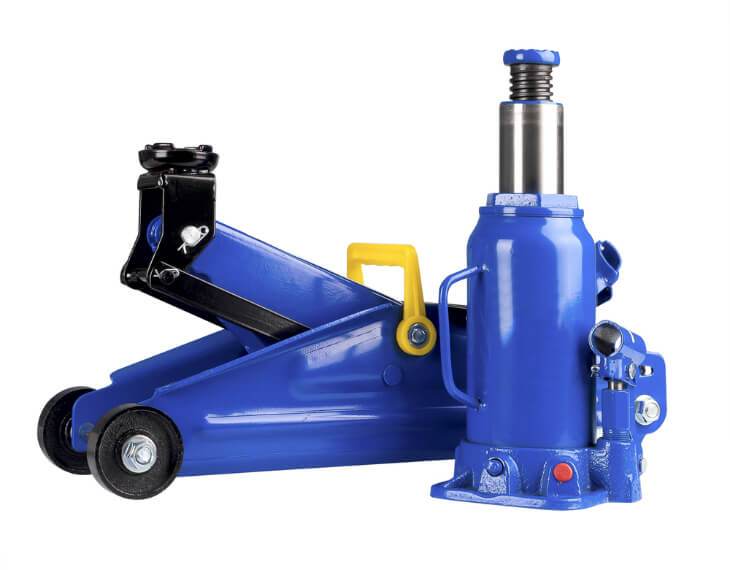
1. Scissor Jack
If you just bought a brand-new car, go ahead and pop open the trunk. Under the trunk cover, you will find the spare tire and a shiny new scissor jack. This type of jack is the preferred choice of car makers because it is small, portable, relatively light, and easy to use. Yes, you will need to use a bit of elbow grease to turn the screw mechanism and lift the vehicle, but it is better to have a scissor jack in the event of an emergency than having nothing at all.
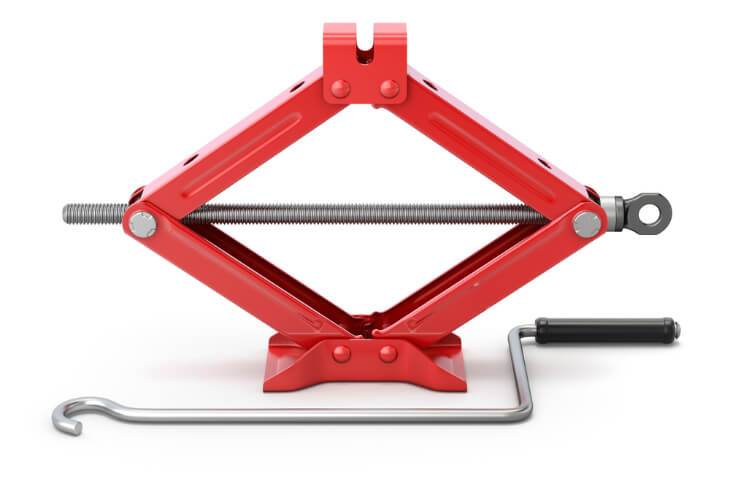
2. Hydraulic Bottle Jack
This type of jack is somewhat shaped like a bottle and works using hydraulic pressure to lift the car. Bottle jacks are also small and portable, but they are heavier than scissor jacks. Bottle jacks have a lifting capacity and must always be used on a hard and level surface. Bottle jacks are deemed ‘stronger’ than scissor jacks, but a lot of care must be undertaken since they lack the stability compared to floor jacks.
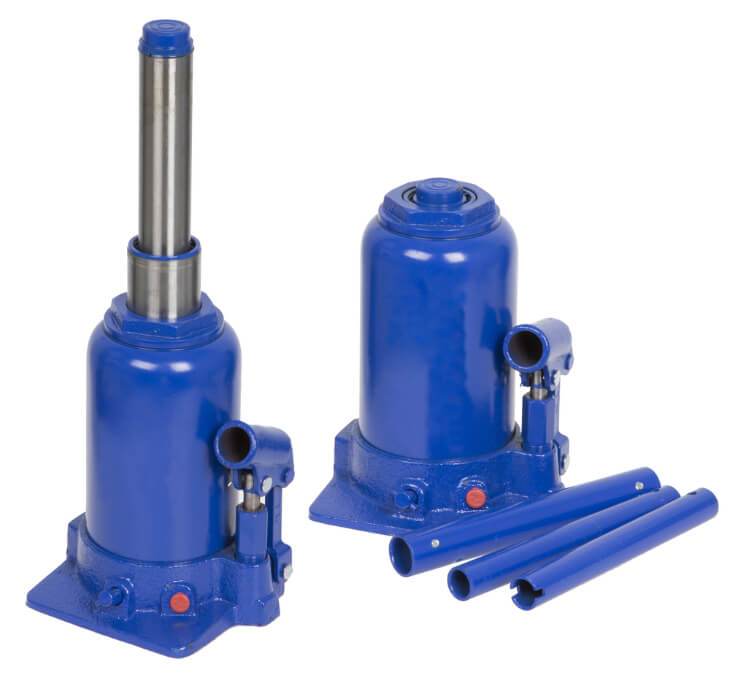
3. Floor Jack
Floor jacks are also called alligator jacks in some parts of the world. They are bigger and heavier than scissor jacks and bottle jacks but they arguably more stable, easier to use, and are more stable. Floor jacks are also easier to move around since they are equipped with wheels. This makes it easier to position the jack in the proper lift points. The best floor jacks are the ones that are rated to lift the weight of your vehicle.

Scissor jacks and bottle jacks are well and good. But in this article, I will focus on how to use a floor jack since it is the one used by professional mechanics all over the country.
The 2 Main Types Of Jack Stands
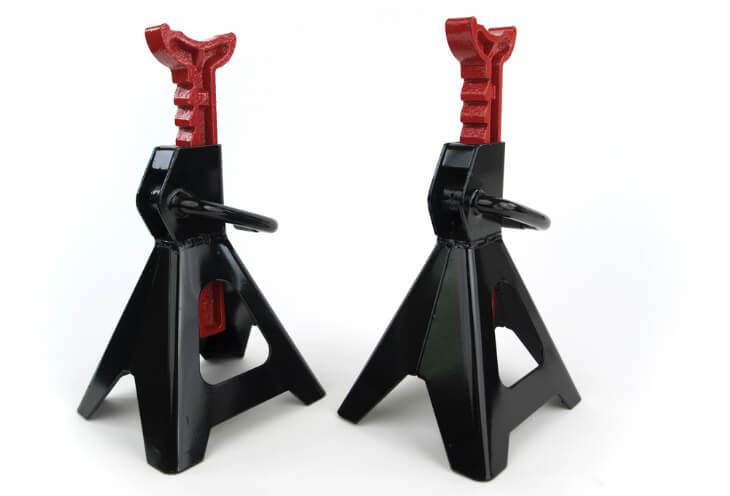
1. Fixed Height Jack Stands
You guessed it right. Fixed height jack stands have a fixed height and cannot be adjusted. This is both good and bad. It is good because there are no moving parts, just set and forget. On the other hand, this is bad because they lack the versatility of jack stands with an adjustable height. But don’t get me wrong. As long as the jack stand is strong and sturdy enough to support the vehicle, then using fixed jack stands is better than using the jack alone to support the car.
2. Adjustable Height Jack Stands
If you’ll ask me, I prefer using adjustable height jack stands simply because you can raise or lower the lift depending on your needs. The most common type is a tripod stand with the notched center column. You can adjust the height using a ratchet.
Medium-duty jack stands are usually made of light steel or aluminum, but the really good ones are made of cast-iron or heavy-duty steel.
Safety Reminders

Before we begin talking about how to use jacks stands and floor jacks, here are a couple of safety reminders that you need to consider.
- Always check the load rating of the floor jack and the jack stand. If your vehicle weighs around 2 tons, then you should use a jack and jack stand that is rated to support 2.5-tons. It is better to be safe than sorry.
- Make sure that you are working on a hard surface and level area. Never jack up a car when you are parked on an inclined road unless you know what you’re doing.
- Always engage the parking brake when lifting a vehicle. It is also a good idea to invest in a set of wheel chocks is you’re going to do a lot of work to the car.
- Only use a floor jack to lift the vehicle. Use the jack stands to support the lifted vehicle. Floor jacks may be strong enough to support the weight of a lifted car, but you should never go under a vehicle if it is not supported by jack stands. This could mean the difference between life and death, seriously.
The Expert’s Guide On How To Use A Floor Jack And Jack Stands
Now you know the types of car jacks and floor jacks, we can proceed to discuss the procedure on how to use a floor jack and how to use jack stands.
You Will Need:
- Floor jack
- Jack stands
- Wheel chocks
Step 1: Park The Car On A Solid And Level Surface
Before jacking up your vehicle, make sure that the car is parked on a solid and level surface, preferably on a concrete floor. Make sure that the floor is free of dirt, oil, or debris. You don’t want the jack stands to move unnecessarily when it is supporting the weight of your vehicle. You should also engage the parking brake and set the gear lever in Park (for A/T) or 1st gear (for manual).
Step 2: Set The Wheel Chocks

It is also a good idea to put wheel chocks on the vehicle. If you are going to lift the front, put wheel chocks on the rear tires. Lifting the rear means putting wheel chocks on both of the front tires.
Step 3: Check The Floor Jack
Now is the perfect time to check the condition of the floor jack. Make sure that the release valve is closed. How? Pump the handle a couple of times to raise the jack, and turn the release valve to lower the jack. In this way, you can test the functionality of the jack while confirming that the release valve is the fully closed position.
Step 4: Locate The Jacking Points
The jacking points are certain areas under the car that are designed to support the weight of the vehicle. Check the owner’s manual to determine the exact jacking points under your vehicle. The jack points are usually located under the front bumpers and rear bumpers, but you can also find jack points in areas behind the front wheels and before the rear wheels.
Step 5: Place The Floor Jack Under The Jacking Point To Lift The Vehicle
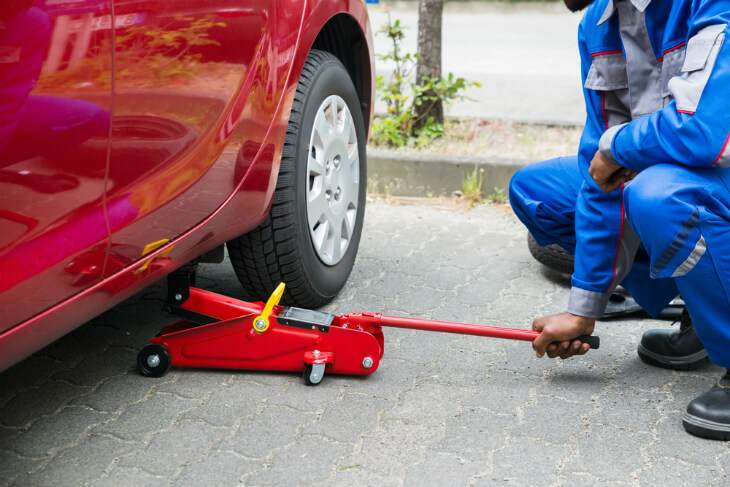
Position the floor jack under the jacking point. Pump the handle a couple of times to lift the vehicle. The pump-action should be smooth and steady. If you notice anything funny or you hear unusual sounds while jacking up the car, release the valve the lower the vehicle and check again.
Step 6: Position The Jack Stands
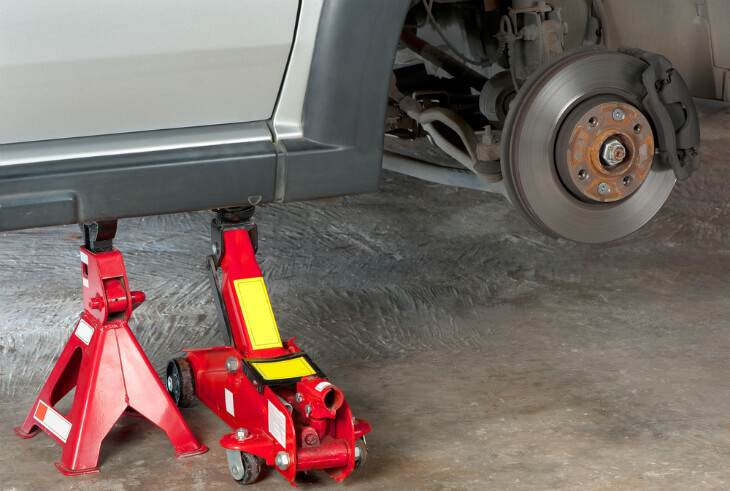
You should hoist the vehicle high enough so you can work comfortably under the car. After determining the proper lift height, position the jack stands on the proper jack points to safely support the car without damaging the body or chassis.
When the jack stands are in place, slowly release the pressure valve on the jack and set it aside.
At this point, you should gently shake the vehicle or give it a slight nudge to make sure that the jack stands are firmly supporting the weight of the car. If everything is good, then you can proceed to work under the vehicle.
If you are going to remove the wheels, it is a good idea to place them underneath the car, preferably beside the jack stands. This is extra insurance against equipment failure and accidents.
Step 7: Remove The Jack Stands
After you’re done, all you need to do is to grab the floor jack, set it under the jacking point, and raise it a couple of inches higher so you can remove the jack stands safely.
After removing the jack stands, slowly rotate the valve to lower the jack.
Conclusion
Now you know how to use a floor jack and how to use jack stands. You can now easily change a flat tire, clean the brakes, change the oil, or do some minor work under the car in the comfort and safety of your own garage.

